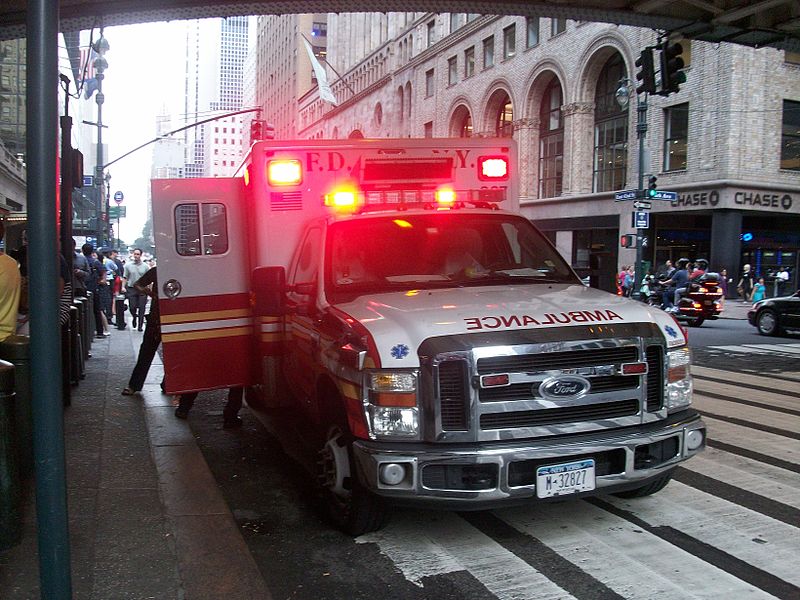It is the duty of all car drivers to obey all traffic rules and to stay alert or observant of the surroundings in order to make proper and correct driving actions that will not result in injury to self or to others.
Now, let us put you in a situation in order to know the essential factors that will help us decide if you are entitled to a compensation for your personal injury claim.
One day while driving, your car was hit by a driver who ran a red light. You wake up in a hospital bed and saw that your leg was encased in a bandage. Your bandage wrapped head is aching and it feels like you ache all over.
You remember that there was a car that appeared suddenly from nowhere and that it struck the side of your car while you were crossing an intersection. You recall that your car flipped to the side and then you lost consciousness.
A knock on the door and your husband arrives, relief visible on his face as he saw you there, hurt but awake already. He holds your hand and asks you what exactly happen that day. So, the best that you can, you tell your husband exactly what happened as you recall the events.
The doctor comes and tells you the extent of your injuries. You are told that the bone in your leg is fractured and an operation was done to insert stainless steel metal to brace the fractured bone. You will not be able to walk unaided for a number of weeks. You were also required to undergo a series of tests to ensure that the head injuries you sustained are not serious. You will be under observation for signs and symptoms of head injury. You need to see your doctor in the future for check-ups and to see how well the bone has healed. If all is well, another operation will be conducted to remove or replace the metal brace depending on your recovery. You will also need therapy to regain full function of your leg.
As a young couple, a big percentage of your combined income is used to pay for the mortgage of your house. You and your husband have also recently purchased cars to help you report to your workplaces on time. You learn that your car will be requiring repair. You are thankful that your personal car insurance will cover $3,000 of your medical bills. But there are hosts of other concerns you need to face. Now, you realize that your hospitalization bill is going to cost you a lot of money. Not only that, you also realize you need money for the medical procedure that needs to be done. You will also be losing income for days absent from work.
Now you ask yourself, is the driver who caused the accident somehow liable? Are you entitled to some sort of compensation for the injuries and losses you sustained? To answer these questions, we need to establish what the essential components of a personal injury claim are. These are:
Table of Contents
1. Legally Recognized Injuries
The injuries that you sustained from the accident caused by another driver’s negligence or recklessness are the direct results of the accident. This means that the medical records you have to show for the injuries sustained during the crash are your evidence or proof.
You have receipts to show for the medicines bought and hospital bills paid. You have medical records certified by the doctor who performed the operation and who attended to your medical needs. So it is important to keep these important pieces of evidence because this will support your claim.
In the example above, the victim will have enough medical records and receipts to establish “damage.” Aside from that, the physical therapist can also attest to the extent of damage. The police report will also support the personal injury claim. If you were the one ticketed for the accident, you are NOT entitled to a claim. It should be established that it is the fault of the other driver. Your legally recognized injuries are your cause of action. This is what prompted you to file a personal injury case.
2. Establish Who is at Fault
It is important to establish that the other driver was negligent of his “duty” and was actually driving recklessly. In our example, police reports indicated that the other driver was speeding and had run a red light. The police authorities had also found out that the other driver was driving under the influence of alcohol.
In this case, the other driver is clearly at fault for he has committed driving violations. Under Utah Law, it is illegal to drive under the influence of alcohol. Not only that, the driver was speeding and did not yield to other motorists by running the red light. This will establish the fact that you were a victim of someone’s recklessness. By driving under the influence, the other driver willfully disregarded his duty to drive with care at all times and to obey all traffic laws. The breach of duty is duly established here. Moreover, the breach of duty cause “damage” and this damage is legally recognized.
3. Source of Compensation
For a personal injury claim to be viable there is a need to establish the source of compensation. This will naturally come from the insurance policy of the driver at fault. Now, if that driver was uninsured, then there will be no source for the compensation.
If you own a vehicle, Utah requires you to have two types of insurance:
1. Liability Insurance
This includes $25,000 per person for bodily injury, $65,000 per accident for bodily injury and $15,000 per accident for property damage.
2. Personal Injury Protection (PIP)
Because Utah has a no-fault law, you also need at least $3,000 in PIP coverage. Unlike liability insurance, which covers the other person in an accident, PIP pays your medical expenses if you’re injured. Utah law requires that you have liability and no-fault insurance for all registered vehicles. According to DMV.org, these ensure that you will be able to pay for any damages or injuries your vehicle causes. This is also called “financial responsibility.” In addition, driving an uninsured vehicle is a class B misdemeanor and carries a minimum fine of $400 for a first offense.
How much does a broken leg cost? This is a very important question since PIP is only $3,000. Would this be enough to cover the cost of a broken leg?
Costhelper has this interesting information:
Typical costs
Without health insurance, non-surgical treatment for a broken leg typically costs up to $2,500 or more for a fracture that requires a cast. A leg x-ray costs an average of $210, according to NewChoiceHealth.com, but can cost as much as $1,000 or more at some radiology centers. Application of a short or long leg cast costs about $221 to $238, not including the doctor fee, according to Saint Elizabeth Regional Medical Center in Lincoln, Nebraska. A typical doctor fee for non-surgical treatment of a fracture would include $90 to $200 for the office visit and from $250 to $950 for treatment, according to Carolina Orthopaedic Surgery Associates.
Without health insurance, surgical treatment of a broken leg typically costs $17,000 to $35,000 or more. For example, at the Kapiolani Medical Center in Hawaii, repair of an uncomplicated leg fracture costs about $16,082, while repair of a complicated leg fracture costs about $33,565, not including the surgeon’s fee. A typical surgeon’s fee could reach $2,000 or more, according to Carolina Orthopaedic Surgery Associates.
With health insurance, typical expenses for treatment for a broken leg could include doctor visi
t copays and treatment coinsurance that could reach thousands of dollars or the yearly out-of-pocket maximum.
For a hairline fracture or less complicated fracture, the doctor would realign the bones (called a “reduction”). If necessary, plaster cast is applied on the leg; depending on the location of the break, this could be a short or a full leg cast.
For surgical treatment, the patient typically would be placed under general anesthesia. The surgeon would make an incision and place screws or metal to hold the bones in place during healing.
The Mayo Clinic has an overview of treatments typically used for a broken leg. Recovery typically takes at least six to eight weeks, according to WebMD.
Additional Costs
Going to an emergency room for treatment initially could add $1,000 to $2,000 or more to the final bill; costs would include an emergency room visit fee, an emergency room doctor fee and the cost of a temporary cast such as an air cast; the patient would then need to seek treatment from a specialist.
Crutches cost about $15 to $40 for a basic pair or up to $100 or more for deluxe forearm crutches.
Physical therapy might be necessary to help regain strength and balance. Several sessions per week at $50 to $75 per hour for six to eight weeks could cost $1,000 or more.
For patients who have a broken bone treated surgically, metal hardware usually can be left in. If removal is required, it can cost between $2,533 and $11,710 or more, according to Saint Elizabeth Regional Medical Center in Lincoln, Nebraska.
The victim in the example is definitely entitled to a personal injury claim. It is now time to consult a personal injury lawyer. A good personal injury lawyer can help you get the compensation you deserve. After all, you have all the essentials of a good personal injury case.
Call Good Guys Injury Law for a free consultation.
Photo copyright of Kevin B


